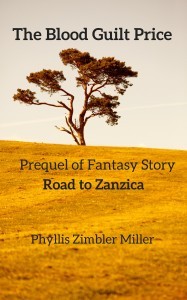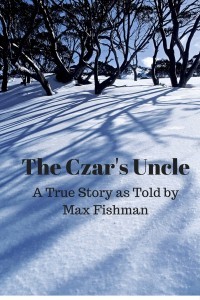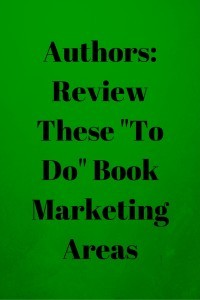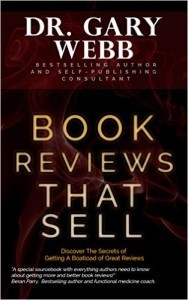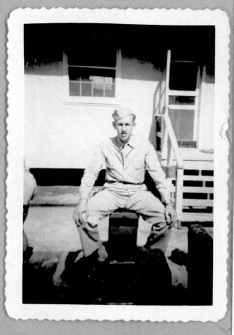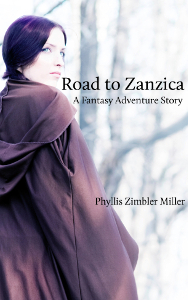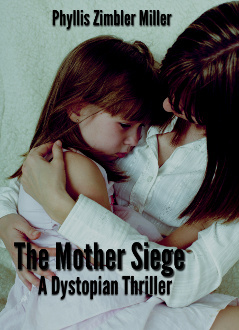Phyllis Zimbler Miller's Blog: Phyllis Zimbler Miller Author, page 14
December 16, 2015
Experimenting With BookGrabbr: THE BLOOD GUILT PRICE
When I found this opportunity, I DMed with @BookGrabbr on Twitter regarding an idea. I wanted to write a prequel story to my fantasy adventure story ROAD TO ZANZICA, which is a Kindle ebook on Amazon. Then the buy link for the story on Bookgrabbr would go to ROAD TO ZANZICA.
The very helpful person on the other end of @BookGrabbr DMs did suggest that I create a new cover for the prequel story — THE BLOOD GUILT PRICE — rather than using the cover of ROAD TO ZANZICA, which I had originally envisioned using.
I took this advice and used my new favorite image creation site — Canva.com — to create a cover. (I’m now using Canva to create images for information articles on my husband’s website EstatePlanningForYou.com and putting those Canva images on the “Estate Planning For You” board on my profile on Pinterest.)
After THE BLOOD GUILT PRICE was uploaded to BookGrabbr, I added the link to the BookGrabbr page to the ROAD TO ZANZICA page on Goodreads. And of course I’ll be using social media to promote this BookGrabbr link. In fact, I may even advertise it via Pinterest ads.
FYI — At this time the video tutorial says you must upload an ePub. But in fact, if you look at the small print on the “add a book” upload page, you can also upload a pdf, which is what I did.
Full disclosure: There is a fee for using BookGrabbr and I am paying the fee — I did NOT get a free upload to test out this site. Yet, while I am cautious as to how I spend my limited book marketing budget, I decided that this new opportunity seemed worth trying. And although I did have an issue with my first upload, BookGrabbr support promptly took care of this.
Both fantasy adventure stories THE BLOOD GUILT PRICE and ROAD TO ZANZICA feature a strong female protagonist who wields a sword. Click here now to read THE BLOOD GUILT PRICE for free on BookGrabbr and share with your friends!
© 2015 Miller Mosaic LLC
Phyllis Zimbler Miller (@ZimblerMiller) has an M.B.A. from The Wharton School and is the author of fiction and nonfiction books/ebooks, including HOW TO SUCCEED IN HIGH SCHOOL AND PREP FOR COLLEGE and the romantic suspense spy thriller CIA FALL GUY. All of her Kindle ebooks can be read for free via Amazon’s monthly subscription program Kindle Unlimited. Phyllis can be reached at pzmiller@gmail.com
December 8, 2015
The Czar’s Uncle: A True 19th Century Story
My maternal grandfather Max Fishman would never tell his story when I was young. But when he was 86 or 87 — he wasn’t sure of the year of his birth — he told me the story of the czar’s uncle:
It was wintertime and the snow was knee-deep. The czar’s uncle came to hunt in our area of Russia — near Tiraspol. Now the czar’s uncle had the best horse, the best harness, the best bridle and the best saddle.
And eight boys got together and killed the czar’s uncle and buried him in the snow. That night it snowed again and covered their tracks.
(There were a lot of bears and wolves there. At night you had to have a light on all the time. We would put a stick in a long clay pot with olive oil in it, and the stick burned for 12 to 14 hours and kept the wolves away. If the bears came towards you, you had to kill them, or they would just squeeze you to pieces. The wolves would tear you up.)
About a month later the eight boys who killed the czar’s uncle came down to a little village where one Jewish family was living. There were 13 in the family and the boys killed 12 of them. the little baby rolled under the bed and didn’t cry and she was left alive.
***
The next morning the gentile [non-Jewish] neighbor woke up and saw that everything was quiet. She got suspicious. She walked over to the house and found the baby alive under the bed and the others dead. She took the baby to her house and warmed it up. Her husband got the horse and wagon and went to town to the sheriff and told him all about it.
The sheriff went to the Jewish community — to the burial committee. The committee took a wagon and placed boards across the top. A few other fellows went with the neighbor. They took the bodies and laid them down across the boards and covered them up. (They didn’t cover the bodies with blankets because they were dead, but they covered them up.) The neighbor woman sat in front while her husband drove the horses, and she held the baby all wrapped up.
Now one of the boys was working in Odessa and he found a Jewish girl — in one of those houses — and made her his sweetheart. He brought her down to our town to live. And when she saw that wagon with the bodies she broke down.
She slipped around the back way and crept into the police station. She told the chief of police all about it — where everything was hidden (the boys didn’t have any secrets from her) — what they had stolen from the czar’s uncle and from the family and whatever they could steal without killing people. They had hidden the stuff in a clay pit — like a basin — that you entered by a tunnel.
***
The police chief put the girl in police clothes and brought her to our house to hide. The police laid a trap and got four of the boys. (There weren’t places to hide like there are in America.) The other four boys ran away: two to Argentina and two to America.
But the police still didn’t find the czar’s uncle because the boys didn’t tell where he was buried. The police held the four fellows in jail, and the two fellows who did the killing said the other two fellows weren’t guilty — they didn’t do the murder.
The snow began to melt late in April and the police found the body. But they already had sufficient evidence — the saddle, the bridle, the rest of the harness, the boots, the coat, the czar’s uncle’s winter cap they already had taken out of the pit along with a lot of other stuff.
Finally the police sent the two who claimed they weren’t guilty to Siberia to dig coal, and the other two who said they were guilty they hung in the public square — the hay market. (We had a great big hay market — like a great big baseball field. Every farmer brought a load of hay in the fall to sell to the Jewish people because every Jewish family had a cow who had to have food for the winter.)
They made everybody in the county over six years old go to see the hanging. We didn’t see any more hangings for several years after that.
Jewish people took the baby and found a mother who had a baby and was able to nurse both babies. They paid her so much for nursing the baby.
***
The chief of police put that girl on the train and shipped her back to Odessa. She wasn’t even guilty and she was honest and she was telling the truth about it. She was no good — you know how some girls turn out — a Jewish girl turned into nothing. She knew before what was going on but she hadn’t said a word because she was afraid she would get killed. (The boys would have killed her if they had caught her.) But she saw that woman — the way she held that little baby — and she broke down.
The police went to the train station at two in the morning so they wouldn’t see anyone — friends of the killers who might want to kill the girl. They came down with a patrol wagon pulled by horses —- six or eight policemen with guns — and put the girl on the train at the last moment. They pushed her up into the passenger car and the train pulled out. They didn’t want to see her killed.
Were there any other things like that which happened in Russia? I asked my grandfather. Not exactly, he answered, not exactly.
If you want to read another historical firsthand account — this one of the Cold War — check out http://budurl.com/TAintro
*When I posted this account on my blog I decided I needed to set the event in a specific historical time period, which I realized I had never asked my grandfather to specify. Looking at family papers and calculating Grandpa Max’s probable birth year, I determined that the event must have taken place in the last decade of the 19th Century.
Subsequently I realized the event may have happened in the first few years of the 20th Century. I looked up the reigns of czars — and there are two different Russian czars during this time period. Then I tried to do research on the uncles of those two czars and couldn’t find any who fit the murder victim.
This is when I realized that the victim could have been, for example, a great-uncle and not an uncle. My grandfather’s first language was Yiddish and as a child he probably spoke some Russian and/or Ukrainian. He told this story to me in English many years after the actual event, and the victim’s exact familial relationship to the czar may have gotten entangled in translation.
© 2015 Miller Mosaic LLC
Phyllis Zimbler Miller (@ZimblerMiller) has an M.B.A. from The Wharton School and is the author of fiction and nonfiction books/ebooks, including HOW TO SUCCEED IN HIGH SCHOOL AND PREP FOR COLLEGE and the romantic suspense spy thriller CIA FALL GUY. All of her Kindle ebooks can be read for free via Amazon’s monthly subscription program Kindle Unlimited. Phyllis can be reached at pzmiller@gmail.com
November 29, 2015
Review These “To Do” Book Marketing Areas
Kindle book descriptions on Amazon:
The descriptions that appear on a Kindle book page are written and revised in an author’s kdp.amazon.com account. Because over the years Amazon has changed what HTML can and cannot be used for this description, it may be necessary to revisit your Kindle ebook descriptions.
I was unhappy to discover that many of the descriptions for my Kindle ebooks were not as effective as they could be. Using the current HTML allowed by Amazon (click here for this HTML) I have been revising mine — and you may want to do this for your own books.
Book marketing on Pinterest:
I pin the covers of my books and ebooks on my Pinterest account and those covers, of course, have the book title and my author name on them.
But what about all the photos I pin from my blog posts and guest posts? Those photos, which are usually NOT of book covers, have no text on them.
That is where the advice of Pinterest expert Beth Hayden has come in so handy. She recommends creating what she calls “posters” to pin onto Pinterest. These are images (photos or solid backgrounds) that also have text on them — in the case of a blog post the title of the post.
As you can see on this post, I have created a “poster” with the site Canva, which I had already been exploring when Hayden suggested it as one of the online sites available to make “posters.”
The reason this is more effective than an image without text is that, as people on Pinterest quickly scan their Pinterest feed, the text is more likely to jump out at them.
Check out Canva.com yourself — it is free when you use your own elements while purchased elements are very reasonable. And the free design tutorials are terrific!
Writing reviews on Goodreads:
While this is not an area that needs reviewing for book marketing purposes, it is an area that may need clarification for authors who ask readers to leave reviews on Goodreads.
After reading Gary Webb’s new book BOOK REVIEWS THAT SELL I wanted to write a review of the book on Goodreads (which is now owned by Amazon). Although I have been on Goodreads as an author for several years, I usually only write reviews on Amazon. But because of the information in this book, I did want to try out writing a Goodreads review.
Lo and behold, even though I was on the book’s Goodreads page I could not find where to write the review! I emailed Webb for help, and I am sharing below what he responded:
To write a review on Goodreads for a book you have read:
Click https://www.goodreads.com/book/show/2...
Enter the star rating below the book image.
Just beneath the book image, a pop-up will appear that says: THANKS FOR RATING. WRITE A REVIEW. Click that.
Enter your review. Click BOOKSHELVES/TAGS. In this case choose READ.
Paste your review into the editor box. [Or write it directly there.]
Enter the date you finished reading.
Click SAVE.
After reading these instructions I know why there are often so many more ratings for a book than reviews on Goodreads. (On Amazon you must leave a review in order to leave a rating, which is not the case on Goodreads.) People rating a book on Goodreads may not even realize they can leave a review. (The words WRITE A REVIEW, which are a link to open the review box, are very small.)
In conclusion, although the above is by no means all the book marketing efforts that might benefit from being reviewed, it is a place to start. And in the comments below you can leave any other suggestions for areas to be reviewed.
Click here to read my blog post about Webb’s book BOOK REVIEWS THAT SELL.
© 2015 Miller Mosaic LLC
Phyllis Zimbler Miller (@ZimblerMiller) has an M.B.A. from The Wharton School and is the author of fiction and nonfiction books/ebooks, including HOW TO SUCCEED IN HIGH SCHOOL AND PREP FOR COLLEGE and the romantic suspense spy thriller CIA FALL GUY. All of her Kindle ebooks can be read for free via Amazon’s monthly subscription program Kindle Unlimited. Phyllis can be reached at pzmiller@gmail.com
November 26, 2015
Amazon Book Reviews: How to Get These
Following the system he describes in his book, Webb contacted me to ask if I would like a review copy in exchange for an honest review. Now I have read the book and can recommend the information, which focuses on book reviews on Amazon.
The most important NOT to do advice includes not doing review exchanges and not offering compensation beyond a free book. This is very important because doing either action may violate Amazon’s Terms of Service and get your books kicked off Amazon. And as authors we definitely do not want to lose the ability to sell our books on Amazon!
The most important “to do” advice is probably that which concerns the quality of the reviews:
The key to book sales is through building a relationship with your readers. But, did you know that the key to getting more and better reviews is establishing ways to communicate better with existing and potential reviewers?
Webb’s strategies are not for those authors uncommitted to promoting their own books. You have to be willing to put in the time and effort to follow his recommendations. But if you’ve already put in so much time and effort to write your books, don’t you want to give your “children” the best chance they have out in the world?
Having been inspired by this book, I’m about to follow the recommendations for my new Kindle fantasy adventure story ROAD TO ZANZICA. I’ll be starting with Webb’s advice as to how to find quality reviewers who might be interested in this type of story. (You’ll have to read the book to learn this information.)
I will add, though, that if anyone is interested in a Kindle format copy of ROAD TO ZANZICA in exchange for an honest review, you can email me at pzmiller@gmail.com (Keep in mind that this is an adventure story with a strong female protagonist and not a full-length novel.)
Click here now for the pre-order page on Amazon for BOOK REVIEWS THAT SELL (NOT an affiliate link). And if you read the book and find it valuable, do write a review on Amazon.
And click here to see ROAD TO ZANZICA on Amazon.
(Remember Kindle ebooks can be read on other electronic devices via the free Kindle app at http://budurl.com/freeKindleapp)
© 2015 Miller Mosaic LLC
Phyllis Zimbler Miller (@ZimblerMiller) has an M.B.A. from The Wharton School and is the author of fiction and nonfiction books/ebooks, including HOW TO SUCCEED IN HIGH SCHOOL AND PREP FOR COLLEGE and the romantic suspense spy thriller CIA FALL GUY. All of her Kindle ebooks can be read for free via Amazon’s monthly subscription program Kindle Unlimited. Phyllis can be reached at pzmiller@gmail.com
November 9, 2015
November 9th: Remembering Kristallnacht
How ironic for me that these two articles should appear in the same newspaper edition. My Cold War memoir TALES OF AN AMERICAN OCCUPYING GERMANY (for which I’m currently seeking a literary agent and a publisher) describes my husband’s and my experiences stationed with the U.S. Army in Munich only 25 years after the end of WWII as well as our experiences as Jews in Germany at that time.
Here is the part of my memoir about Kristallnacht:
I had been sitting in the army-supplied living room armchair reading a book about the Holocaust. I had started to read the description of a 1938 event I hadn’t heard of before — Kristallnacht — the Night of Broken Glass — a supposedly “spontaneous” action against synagogues and Jewish businesses throughout Germany and Austria (the Anschluss — annexation — to Germany took place on March 13, 1938).
During the attacks on Jewish-owned property and synagogues, 36 Jews were killed, 36 severely injured, and 30,000 Jews were arrested and sent to concentration camps at Sachsenhausen, Buchenwald and Dachau. After Kristallnacht the government confiscated all insurance claims and imposed a fine of 1,000,000,000 marks on the Jews.
The book explained that the “spontaneous” attacks on synagogues and Jewish businesses had in fact been carefully orchestrated by the Nazis. They used the excuse of the assassination of Ernst von Rath — the third secretary of the German embassy in Paris — by Herschel Grynszpan, the son of Polish Jews who had lived in Germany until their deportation by the Nazis to the Polish-German frontier in October 1938.
The order for the “spontaneous” action against the Jews came from the Nazi leaders gathered in Munich for the annual commemoration of Hitler’s abortive 1923 beer hall putsch.
And there in front of me on the open book page was the date the action took place — the night of November 9-10. At that moment goose bumps rose on my arms as I realized I was sitting in Munich — the heart of the Nazis’ support — on November 9, the 32nd anniversary of Kristallnacht!
This unease persisted when I then read an article in that day’s Stars and Stripes headlined “Scheel Tours Auschwitz in Grim Silence.”
OSWIECIM, Poland (AP) — Grim and silent, West German Foreign Minister Walter Scheel Sunday visited the former Nazi extermination camp at Auschwitz in southern Poland, the first representative of the West German government to do so.
He was accompanied by his state secretary, Paul Frank, former State Secretary Georg Ferdinand Duckwitz and Bundestag Vice President Carlo Schmid.
Under a sunny and cloudless sky, Scheel placed a wreath of red and white carnations with a black, red and gold ribbon at the foot of a monument erected to honor the four million victims of Nazi extermination in Auschwitz.
For about an hour, Scheel walked through the blocks of the camp and looked at the documents and evidence of what happened at Auschwitz between 1942 and 1945.
At the conclusion, he wrote in the camp’s guest book, laid out for him near a crematory: “In the face of this horror, of this inhumanity, it will be our duty to safeguard these highest values — the dignity of man, peace among peoples. Walter Scheel.”
That this momentous first visit should come when I was in Germany added to the surreal situation in which I found myself.
When I had told Mitch that it was the anniversary of Kristallnacht, he told me of a conversation at the 18th Military Intelligence Battalion [where Mitch was assigned]. Mitch’s civilian boss of the sociological desk, Lutz Kempner, had decided to write his Ph.D. dissertation on the role played by the German Foreign Office on the “Jewish question.” Lutz had asked Henry Einstein, the civilian head of another desk, “How can I find this out?”
As a Jewish teenager Henry had been lucky enough to get out of Germany in time — he was sent to relatives in New York City — and then returned as a U.S. soldier. After the war, he chose to remain in Germany as a civilian to stay near his mother, who refused to leave Germany.
(Although Henry’s father had been killed in Auschwitz, his mother survived because she claimed French citizenship. This claim had been made on the grounds that she had been born in Strausbourg when the Alsace region was French rather than German. Henry never explained how this claim saved his mother’s life as the French Jews were also sent to the gas chambers.)
During the Nuremberg Trials of Nazi war criminals, Henry worked as a researcher for Lutz’s father, Robert Max Wasili Kempner — a lawyer and early anti-Nazi who had been a senior government advisor in the Prussian Ministry of Interior until arrested by the Gestapo when Hitler rose to power. From 1946-1949 Herr Kempner had headed the Defense Rebuttal Section for the Nuremberg Trials.
Henry’s reply to Lutz: “Your father only indicted every member of the Foreign Office he could find.”
—
In two days it will be Veterans Day. As an American Jew I am very aware of the democracy protected by our military, and I am thankful for all U.S. military personnel (and their families) in the past and in the present and in the future.
(The photo accompanying this post is of my father, Albert Zimbler, during WWII. As the number of living veterans of WWII dwindle, it is especially important to honor them.)
FYI — Check out my proposed PTSD TV projects (as a way of giving back) at www.SolomonsJustice.com and read my entire Cold War memoir for free on Wattpad at http://budurl.com/TAintro
© 2015 Miller Mosaic LLC
Phyllis Zimbler Miller (@ZimblerMiller) has an M.B.A. from The Wharton School and is the author of fiction and nonfiction books/ebooks, including HOW TO SUCCEED IN HIGH SCHOOL AND PREP FOR COLLEGE and the romantic suspense spy thriller CIA FALL GUY, as well as newly written books not yet published. She can be reached at pzmiller@gmail.com
November 2, 2015
Digital Access for Seniors: My Trip to Chicago
I especially wanted my hearing impaired mother to be able to watch TV shows on her mini iPad (after getting the free Netflix app) and to watch with closed captions. (Her vision is not good enough to watch with closed captions on her televisions.)
She has now watched an episode of “Murder She Wrote” on her iPad and really enjoyed this experience. (She sat in a comfortable chair and held her lightweight mini iPad at the best angle for her.) Plus I created for her a “My List” of shows I have watched on Netflix that I think she will enjoy.
What I find most interesting about this ongoing experience (now working remotely with my father so he can watch a movie on his computer via his Amazon Prime membership) is how these “smart” devices, which many think of as appealing to younger people, can be particularly beneficial for seniors.
I also taught my mother how to tell whether a Kindle ebook on Amazon is available to read for free via her Kindle Unlimited subscription or her Amazon Prime membership. And to demonstrate this I had her download my new fantasy adventure story ROAD TO ZANZICA, which is free via both Kindle Unlimited and Amazon Prime. See amzn.com/B015M48QOK
(Although both my parents also have Kindle ebook readers, Amazon makes it very easy for people to read Kindle ebooks on smartphones, tablets, and computers. See http://budurl.com/freeKindleapp)
These digital/tech options can truly improve the quality of life for seniors as well as others not familiar with these opportunities. Thus, if you are good at these options, I recommend that you share your expertise with others who could benefit.
© 2015 Miller Mosaic LLC
Phyllis Zimbler Miller (@ZimblerMiller) has an M.B.A. from The Wharton School and is the author of fiction and nonfiction books/ebooks, including HOW TO SUCCEED IN HIGH SCHOOL AND PREP FOR COLLEGE and the romantic suspense spy thriller CIA FALL GUY, as well as newly written books not yet published. She can be reached at pzmiller@gmail.com
September 30, 2015
Controversial Issues in My Sci Fi Story THE MOTHER SIEGE
First, let me set straight this sci fi story record: Two teens in 2049 who have just turned 13 decide to have sex for the first time the night before they expect to die or be killed. And in theory there are no risks of pregnancy or STDs in this dystopian society.
Now that I have explained this, I can discuss what is really important:
The fact that much sci fi fiction, including THE MOTHER SIEGE, is actually a medium for authors to discuss their concerns with society today or what may happen to society in the future.
Sexual “prompts” are persuasive in society today. Even toddlers buckled into their car safety seats can look out the car windows and see explicit or implicit sexual situations writ very large on billboards.
The more time children and young teens watch videos on YouTube, continue to watch commercials on TV, and listen to online music the more these young people will be exposed to sexual stimuli.
THE MOTHER SIEGE in its young teen sex subplot is raising the question of whether this future outcome — I do believe eventually sex will be risk free from pregnancy and STDs — needs to be considered and perhaps mitigated before it is upon us.
Why do I think this future scenario may need to be mitigated?
Because I think that for many young teens their maturity level is not yet developed enough to deal with the emotional challenges of sex. In fact, the mother protagonist of THE MOTHER SIEGE does worry about this. And I hope that THE MOTHER SIEGE can in some small part encourage this discussion.
On the question of genetics
A very important topic in THE MOTHER SIEGE is the question of genetic screening. Amy Dockser Marcus says in her September 28, 2015, Wall Street Journal article “How One Family Faced Difficult Decisions About DNA Sequencing”:
Studies are under way looking at the possibility that someday, everyone will get sequenced at birth.
Will this mean that — if parents do not like the genetic factors of their newborn child — they can choose to have that child quietly “disposed of”?
Yes, this is a very extreme possible scenario — and I am absolutely NOT suggesting this — but I do think that society needs to consider these types of questions before, for example, gene sequencing is routinely done at birth.
I have written about genetic screening before — most recently in ”Sex Selection in Real Life and Fiction.” (Click here to read this post.) Genetic screening is a very serious topic that should be carefully considered now rather than later.
Finally, in response to the reader who left the comment on Wattpad about young teens having sex, I am very glad the issue was brought up. This is exactly the kind of questions I hope to encourage discussions about with THE MOTHER SIEGE and its in-progress prequel THE UPHEAVAL set 20 years earlier in 2029 at the moment the world changed.
© 2015 Miller Mosaic LLC
Phyllis Zimbler Miller (@ZimblerMiller) has an M.B.A. from The Wharton School and is the author of fiction and nonfiction books/ebooks, including HOW TO SUCCEED IN HIGH SCHOOL AND PREP FOR COLLEGE and the romantic suspense spy thriller CIA FALL GUY, as well as newly written books not yet published. She can be reached at pzmiller@gmail.com
September 21, 2015
Announcing the Publication of Fantasy Adventure Story ROAD TO ZANZICA
The story sprang itself on me when I decided to accept an invitation to write a story on the site Skrawl. And after starting the story, I realized how many influences unknowingly came together in this adventure.
Here is the list I compiled of probable influences:
The Princess Bride film
Dark Matter sci-fi TV series
Killjoys sci-fi TV series
Masterpiece Theatre’s Poldark historical TV series
BBC’s Robin Hood TV series (Lady Marian sword fights)
Lois McMaster Bujold’s 1st Chalion fantasy book
Georgette Heyer’s historical fiction books
Jane Austen’s books
Robert Graves’ nonfiction book The White Goddess
Shakespeare’s Twelfth Night
And there is one more probable influence — the years I watched my daughter Yael Miller fence saber.
Of course, the most important factor is that I always write strong female protagonists, although I am partial to including romance if appropriate.
What I really loved about writing ROAD TO ZANZICA was the opportunity to make up words and concepts. For example, here are my fantasy time concepts:
star cycle = 13-month cycle (year)
moon cycle = month
sabbath cycle = week
sun cycle = day
watch cycle = hour
And now that I have published this first fantasy adventure, I am planning subsequent adventures in the Road to Zanzica series:
Sojourn in Zanzica
Stopover in Wagreth
Journey to Machal
Quest to Sorca
Click here to read the beginning of this story on Amazon via “Look Inside” and, if the story appeals to you, I hope you’ll buy it (or borrow it via Kindle Unlimited) and tell your friends.
© 2015 Miller Mosaic LLC
Phyllis Zimbler Miller (@ZimblerMiller) has an M.B.A. from The Wharton School and is the author of fiction and nonfiction books/ebooks, including HOW TO SUCCEED IN HIGH SCHOOL AND PREP FOR COLLEGE and the romantic suspense spy thriller CIA FALL GUY, as well as books not yet published. She can be reached at pzmiller@gmail.com
September 17, 2015
Oktoberfest in Bavaria: Then and Now
The article — entitled “Migrant Crisis Clashes With Germany’s Oktoberfest, Highlighting Broader Pushback on Merkel’s Policy: Giant beer party opens Saturday as Bavaria and the rest of Germany struggle to house tens of thousands of asylum seekers” by Andrea Thomas in Munich and Anton Troianovski in Berlin — stated:
This week, Munich police officials tried to reassure the public that they have matters under control. The biggest challenge, deputy Munich police chief Werner Feiler said, would be keeping order at the central train station, which could have large numbers of beer festival visitors and migrants passing through simultaneously.
“We have currently here in Munich a situation that doesn’t compare to any Wiesn operation before,” Mr. Feiler said, using the colloquial Bavarian term for Oktoberfest’s main venue in central Munich.
My husband Mitch and I have our own personal recollection of arriving at the Munich central train station during Oktoberfest:
In September of 1970 — at the 11th hour — the U.S. Army informed my husband that he had orders for Munich and I had concurrent travel orders.
Without going into a long story, suffice it to say that Mitch and I arrived in Munich on a Sunday with our eight allowed pieces of luggage and no idea where in Munich we needed to go. As we stood on the train station platform surrounded by drunken gastarbeiters (guest workers from countries such as Turkey) we did not yet realize we had arrived during the annual Oktoberfest.
Luckily Mitch had taken German in high school and was thus able to snag a taxi for us and all our luggage that I had stood guard over while surrounded by drunken revelers. All Mitch knew to say to the taxi driver regarding our destination were the German words for “American post.”
Unbeknownst to us, because the Olympics were to be in Munich two years from then in September 1972, the Germans had prevailed on the Americans to already move almost all American military units out of Munich except for the group to which Mitch had been assigned. This meant that there was only one place the taxi driver could take us.
A few days later we experienced Oktoberfest up close and personal: The monthly mandatory Hail and Farewell for the officers and spouses of the 66th Military Intelligence Group was held in a tent at the main Oktoberfest venue in central Munich. Mitch and I were welcomed there while others were sent off to Vietnam amidst a great deal of eating and drinking.
Years later Mitch and I used our experience at Oktoberfest as the basis for a comedic chase sequence in our screenplay HOT POTATO. (We subsequently adapted the screenplay into a novella, which is available at www.amzn.com/B00G8P6SXO in Kindle format.)
And of course our experience at Oktoberfest is included in my Cold War memoir TALES OF AN AMERICAN OCCUPYING GERMANY, which can be read for free on Wattpad at http://budurl.com/TAintro
Back to this year’s Oktoberfest — unless the beer taps are turned off right now, anything can happen.
© 2015 Miller Mosaic LLC
Phyllis Zimbler Miller (@ZimblerMiller) has an M.B.A. from The Wharton School and is the author of fiction and nonfiction books/ebooks, including HOW TO SUCCEED IN HIGH SCHOOL AND PREP FOR COLLEGE and the romantic suspense spy thriller CIA FALL GUY, as well as books not yet published. She can be reached at pzmiller@gmail.com
August 29, 2015
Writing Fiction in Different Time Periods
First, I’m updating a manuscript of a Rebecca Stone cozy mystery SINK LIKE A STONE — sequel to CAST THE FIRST STONE. I’m having to remind myself to update actions that now in 2015 are done by texting and other digital actions rather than by more outdated methods.
On the other hand, I’m writing the sci fi story THE UPHEAVAL, which takes place in 2029. In my attempt to be realistic about what the future might bring, I’m reading tech articles about potential discoveries.
For example, the August 28th Wall Street Journal article by Gordon Lubold “Pursuing Electronics that Bend, Pentagon Advances Partnership with Tech Firms: Defense Secretary Ash Carter to announce program to develop flexible devices with Silicon Valley companies” made me consider if this news could affect the actions of any of my characters in 2029.
Of course, THE UPHEAVAL is more complicated because it is the prequel of my 2049 sci fi dystopian story THE MOTHER SIEGE. I have to balance which futuristic elements in THE MOTHER SIEGE can actually be introduced in THE UPHEAVAL and which have to wait a few fictional years before making their appearance “on stage.”
Then I have to remember to be careful when working on my fantasy story ROAD TO ZANICA, which while fantasy has elements of the Medieval time period and there are no flush toilets!
Screenwriting vs. fiction writing
Another discrepancy that I have to keep in mind is POV (Point-of-View) — whose head are we in?
In fiction writing these days there is a definite preference for POV characters, and thus readers can only know the internal thoughts of whichever POV character is “on stage&dquo; at the moment. This is in contrast to an omniscient (all-knowing) POV where the reader can know every character’s thoughts from paragraph to paragraph.
In screenwriting it is the opposite — there is virtually no POV.
With the exception of the rare times when characters speak to themselves, the audience has no way of knowing the characters’ internal thoughts. These thoughts must be revealed through dialogue or action. (Older films frequently relied on a character lighting a cigarette to show anxiety.)
Thus when adapting fiction writing to screenplay format, as I am doing simultaneously while writing THE UPHEAVAL, I have to be careful not to confuse the two different POV requirements. I have to remember that, although there is no POV in the script. I have to be careful of character POV in the story.
In conclusion, what all of this comes down to is creating a pleasurable entertainment experience for the reader or viewer. We have to be careful not to jar readers or viewers out of a story world because protagonists say or do something that doesn’t fit within the time period of the story (or the format of the fiction).
And after all, Medieval knights and their ladies did not have Apple watches.
© 2015 Miller Mosaic LLC
Phyllis Zimbler Miller (@ZimblerMiller) has an M.B.A. from The Wharton School and is the author of fiction and nonfiction books/ebooks, including HOW TO SUCCEED IN HIGH SCHOOL AND PREP FOR COLLEGE and the romantic suspense spy thriller CIA FALL GUY, as well as books not yet published. She can be reached at pzmiller@gmail.com
Phyllis Zimbler Miller Author
- Phyllis Zimbler Miller's profile
- 15 followers


